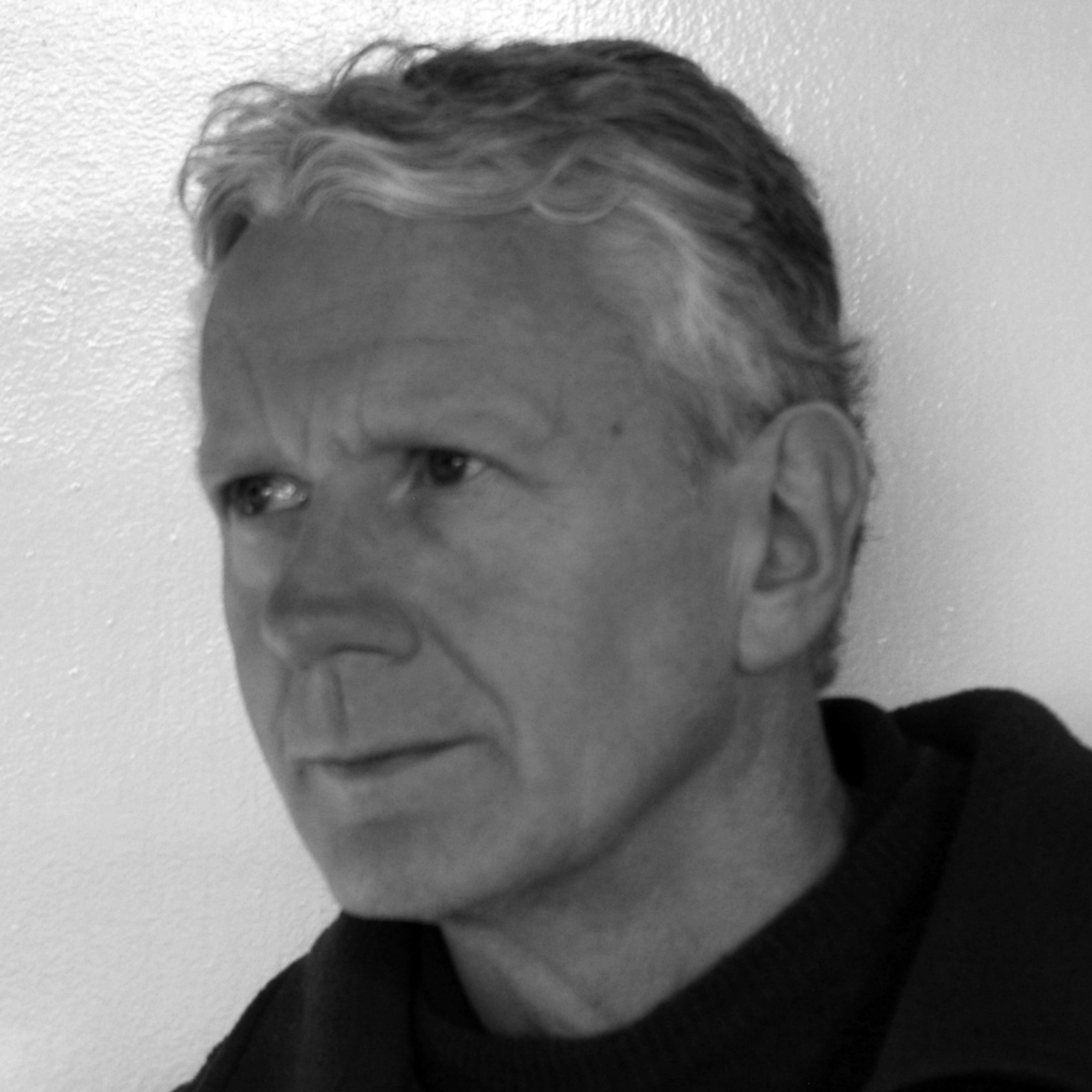Um listamanninn
My staple medium is the fall-out from volatile, short-lived processes that run their course and leave behind them a chronicle of events that are dislocated by the passage of time.
The large-scale ice-melt works operate somewhere between sculpture and drawing. Really the flattened remains of defleshed objects in the round, they allude to the paradox of the material world, and draw as their primary source from the metaphysics of landscape. Made from ice, but often shattered into explosive configurations suggestive of volcanics and seismic collision, these ultra-heavyweight drawings take on aspects of the Icelandic terrain: flood, faultline, bedrock and glacier sit on the paper surface as rusting iron fossils pressed flat by time and gravity.
The massing and unravelling of nature´s architecture, as an endless spiral of collapse and rebirth, is of interest to me first and foremost as an intensification time. Central to the ice-melt process is material change and transformation, as solid and void exchange roles. However, experiencing the work has inevitably been conditioned by our growing realisation that the earth´s systems may be breaking down, spear-headed by the shrinking of the ice-caps. The ghost-presences of extinct forms stranded on the surface of the drawings, therefore, increasingly becomes a contemporary commentary.
Iron, the material at the heart of the Industrial Revolution - and of humankind´s claim on the land by conquest or cultivation - is, in Iceland, the medium that breaks down the landscape from within. As the chemical weak link in the basalt, it´s the stuff that brings the mountain crumbling down onto the plain as oxidised scree and dust. In its rusted state it´s also the stuff of obsolescence; of things that have had their time.The pools of iron space on the surface of the drawings acknowledge a distant geological past, but also a permanent state of change - now itself assuming a synthetic dimension - offering, perhaps, an intimation of unsettling times to come.
þessi stóru íslistaverk eda ísþrykk liggja einhversstaðar á mörkum höggmynda og teiknilistar; unnin úr ísblokkum og járnlitarefnum er smá saman bráðna ofan á pappírin. Við bráðnunina falla út efni sem minna helst á jarðvegsleifar eða steingervinga mótaða af tíma og þyngdarafli. Ryðlituð í mörgum blæbrigðum, en sumstaðar svört og sumstaðar blá.
Áferðarþykku listaverkin bera sterkan svip af atgangi íslenskra náttúruafla og stöðugum umbreytingum landsins; flóð ánna yfir eyrar og sanda, hopandi skriðjökla og jökulöldur, hreyfingar jarðskorpu og berggruns. þau endurspegla landið sem bæði gefur frá sér allt efni og sýnir.
Byggingarlist nátúrunnar er rakinn í sundur. Vafningurinn brotnar niður og endurfæðist aftur með tímanum. Breyting verður á efninu sem sundrast, sameinast, umbreytist og hleðst að síðustu upp sem misþykk setlög jarðefna og lita.
Í listaverkunum verður maður áþrefanlega var við þá óafturkallanlegu þróun, að innviðir jarðar og náttúru eru smá saman að brotna niður; jörðin hlýnar og jökulkápan bráðnar, þynnist og hopar. Dreggjar liðinna tíma - þess sem einu sinni var - reka á land á yfirborði listaverkanna; varðveitast þar og öðlast nýtt líf í samtímanum.


